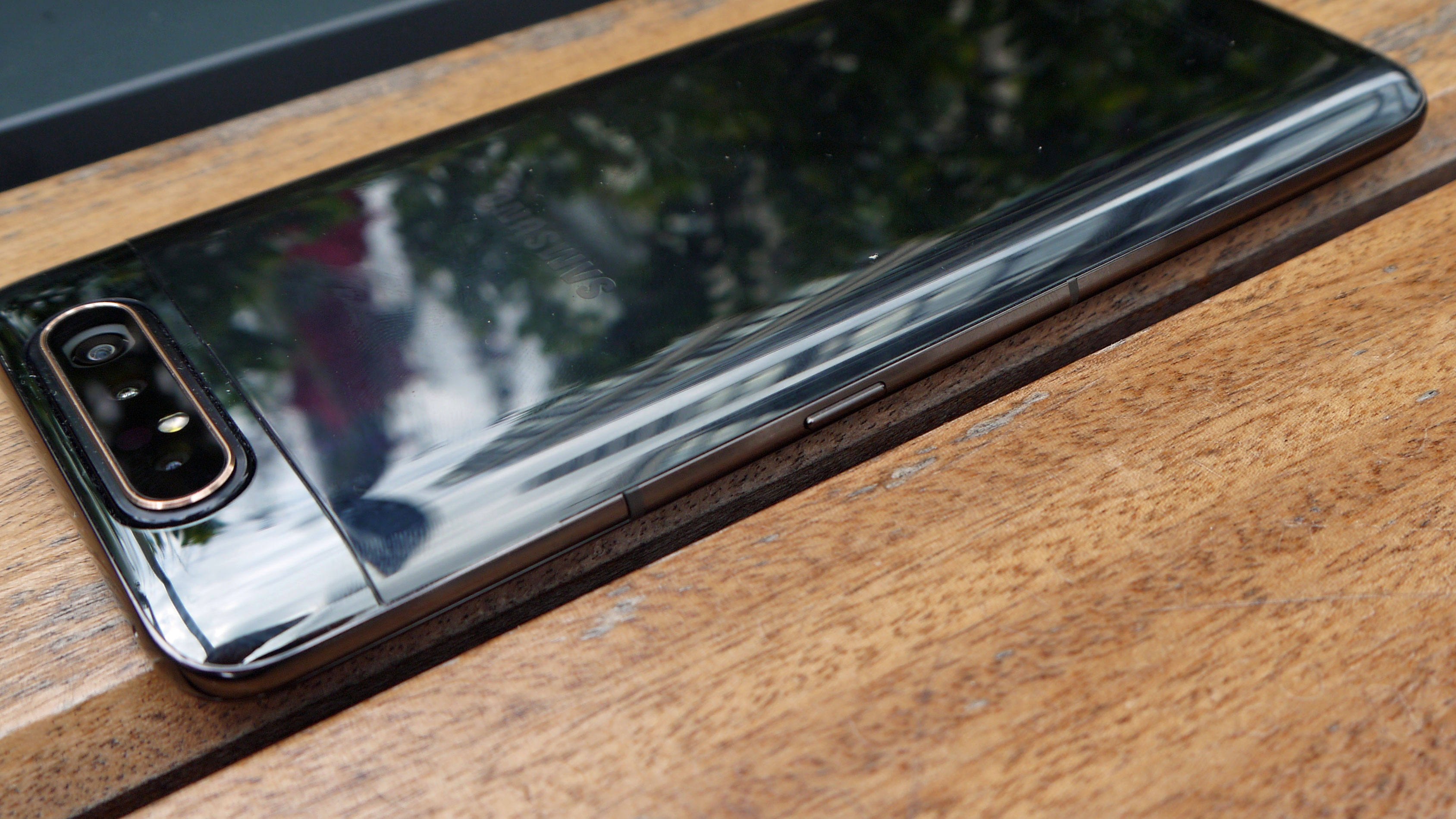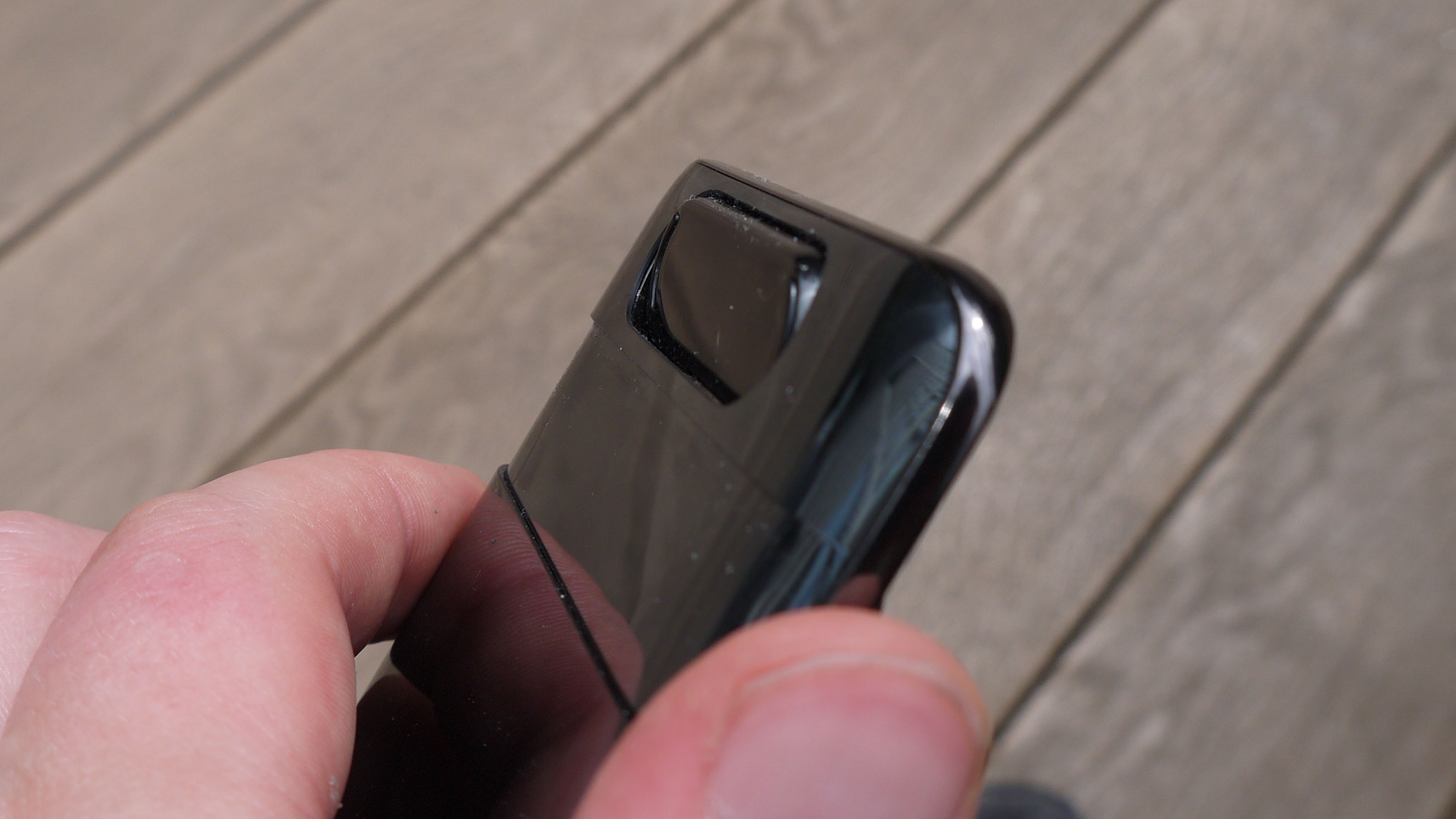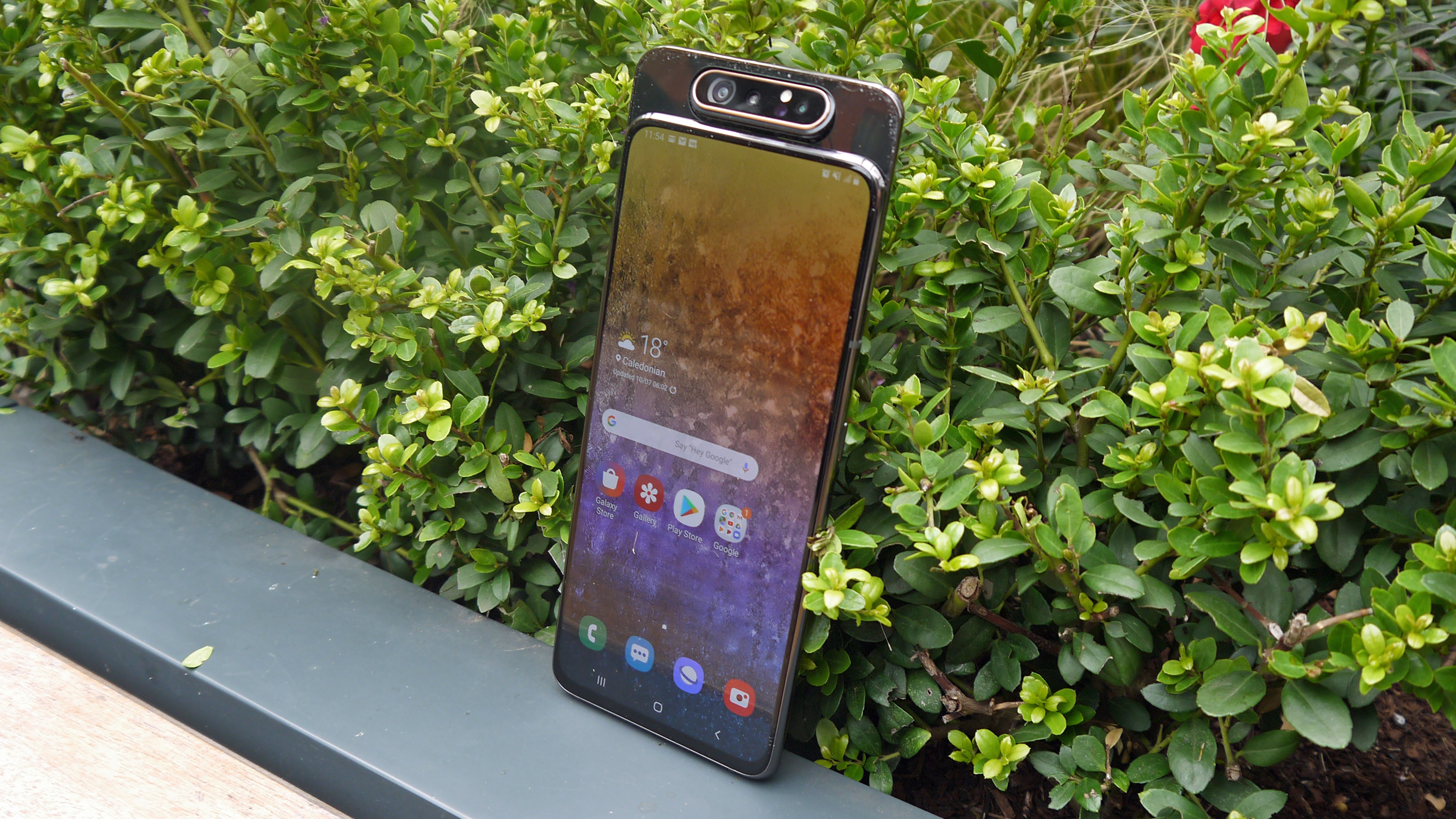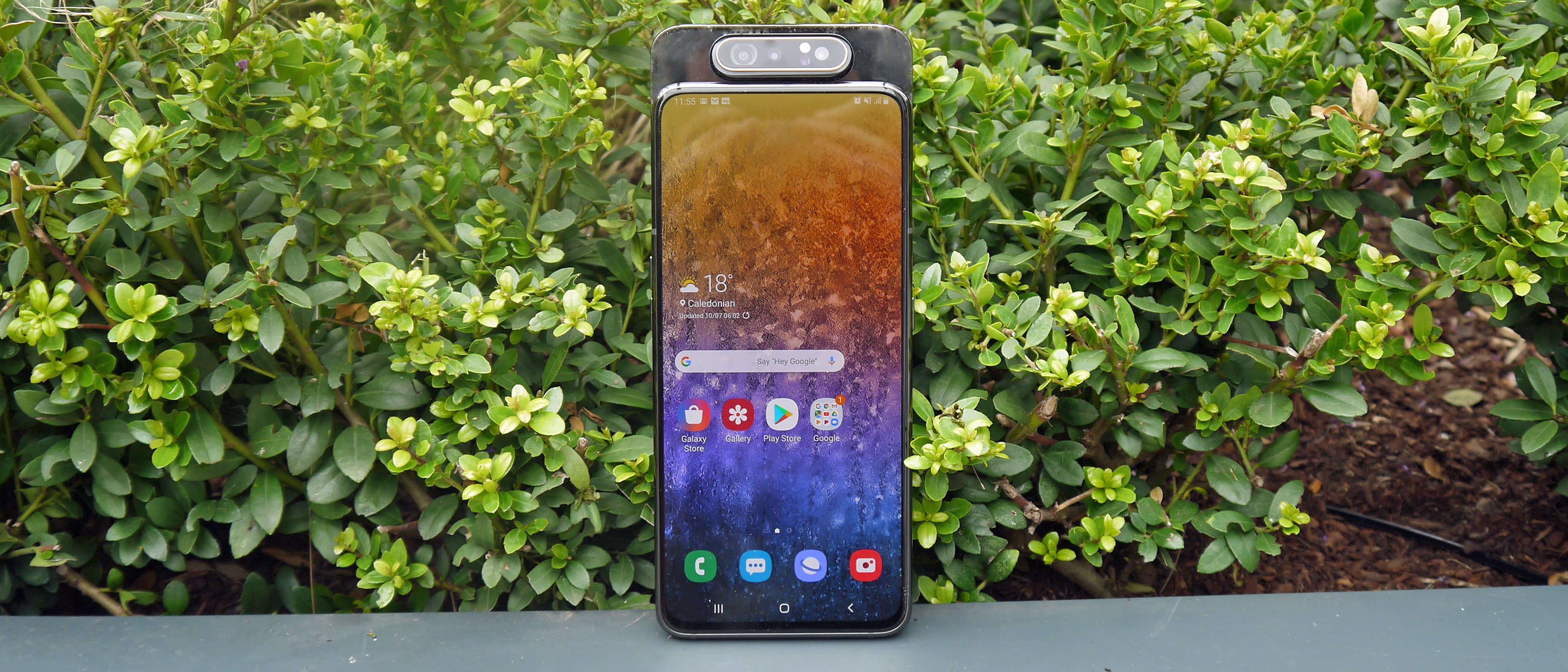TechRadar Verdict
Beyond the fun rotating pop-up camera, and the high-quality notchless screen you get as a result, the Samsung Galaxy A80 doesn't have too many impressive features, and verges on irritating to use at times.
Pros
- +
Novel pop-up, spinning cameras
- +
High quality screen
- +
Fast charging is decidedly fast
Cons
- -
All-around slow to use
- -
Camera is OK, not great
- -
Unreliable data connection
Why you can trust TechRadar
Let's work our way up the Samsung Galaxy A range – we start decidedly affordable with the Galaxy A30, improve some minor specs and features for the A40 and A50, perfect the 'affordable' mantra of the series with the A70… and then throw the rules out the window with the Galaxy A80, which seems on the surface like a radical departure from the rest of the Galaxy A series.
With its pop-up rotating rear camera section, you're not getting a normal 'affordable' handset in the Galaxy A80. It presents a curious blend of features that straddles the line between affordable and premium – it's a quirky, novel device that's sure to grab attention at parties.
Drawing a crowd is one thing, but you’re going to be using your phone all the time, and the Samsung Galaxy A80 also presents a series of compromises in order to fit its relatively mid-range price tag.
So does the result of these compromises leave the Galaxy A80 a glorified gimmick phone that’s not worth your money? Or is it a genuinely impressive device?
Price and availability

Despite being part of Samsung’s Galaxy A range, which is the company’s roster of more affordable smartphones, the Galaxy A80's price puts it at the upper limit of the mid-range market.
The Samsung Galaxy A80 price is £579 (roughly $725, AU$1,040), making it a little cheaper than the Huawei P30 launch price of £699 / AU$1,099 (roughly $910) but not as affordable as the Google Pixel 3a at $399 / £399 / AU$649.
That price is quite a hike up from the Samsung Galaxy A50, which is the most widely available Galaxy A handset, and will cost you $349 / £309 / AU$499. However the price has nothing on the Samsung Galaxy S10, which cost $899 / £799 / AU$1,349 on release.
At the moment you can pick up the phone in the UK, but there's no word on a US or Australian release – we'll update this review when we find out more.
Design
The Samsung Galaxy A80 is a chunky device, both in terms of size and weight, and it’s probably not great for someone who wants a nimble phone that’s easy to hold in one hand.
Weighing in at 220g, the Galaxy A80 is one of the heaviest phones we’ve seen – it’s not quite the 232g of the Huawei Mate 20 X, but it’s a lot heavier than most other devices. In comparison, the Galaxy A50 is a relatively dinky 166g.
The dimensions of the device are 165.2 x 76.5 x 9.3mm, so it’s not as big compared to other phones as its weight suggests, but it’s still up there. The phone is this big to facilitate the large 6.7-inch screen, which we’ll get to later.

The Galaxy A80 definitely feels like a high-end device – its Gorilla Glass display and back, and metal frame make it just as premium to hold as the most expensive iPhone or Galaxy S10.
Around the sides of the handset, you’ll find a power button on the right, and the volume rocker on the left. Having these buttons on opposite sides of a phone is something manufacturers keep persevering with, even though it makes it a pain having to reach both, and we’re disappointed to see it here.
There’s a USB-C port on the rear of the device, along with the single down-firing speaker. There’s no 3.5mm headphone jack, which is no surprise given the trend of companies insisting you buy wireless headphones, but having only one speaker is a nuisance that we’ll get into later.
Now onto what you want to hear about – the pop-up rotating camera section. It’s a fun novelty, for sure, but it feels like less of a useful solution to the notch problem than other pop-ups like on the OnePlus 7 Pro or Oppo Reno 10x Zoom.
Firstly, the pop-up is rather slow, mostly due to how high it has to rise to get the camera to rotate, so it doesn’t feel snappy or useful to use.

Secondly, the panel is a dust magnet, and every time we popped it up we had to wipe the dust away.
Thirdly, and more importantly, the section feels rather fragile. When it’s down, you can shake it and wiggle it without much work so it rattles about in its casing, and when it’s up, you can easily flip and fiddle with the rotating panel, causing the phone to freak out and close the camera app.
We found it would easily get stuck halfway up if we manually twisted this panel, and often needed our help to return to normal.
When the pop-up camera panel is down it shook and rattled as though it was loose, which is far from a good sign on a smartphone that should last us years.
The obvious answer to this is 'don’t fiddle with the section' but to suggest that as legitimate advice is to deny people’s natural urge to fiddle with things – especially for the younger audience that the Galaxy A80 is aimed at.
Over the course of our review we started to feel rather nervous using the pop-up section because of its frailty – we all know what happened to the Samsung Galaxy Fold, and didn’t want to recreate it by breaking the moving parts of the A80 too.
Display
If there’s something you can rely on Samsung phones for, it’s their high-quality screens, and as such the Samsung Galaxy A80’s display is great to look at.
Using Super AMOLED screen tech, which results in a high contrast ratio and bright colors, the Galaxy A80 promises a great viewing experience, and the fairly high max brightness is nothing to turn your nose up at either.

There is a range of features in the settings menu that let you adapt the screen quality to your particular preferences too, like adding a blue light filter or dark mode, or tweaking the RGB colors of the screen.
We made sure to turn on Vivid mode in the settings menu – as the name suggests this makes colors more vivid, although perhaps a little less natural, but it still makes games and media more appealing.
On top of that (literally), the lack of a notch makes this Samsung’s best display to date, as there are no complications getting the way of your viewing experience, and no notch or bezel taking up your valuable screen real estate.
If there’s one thing that may be a little unappealing about its display, it’s the size – at 6.7 inches, you might find the screen, and the phone, a little too big to use easily if you have smaller hands.
There’s a one-handed mode you can enable, but it makes the viewable screen comically small, so isn’t as useful as it is in other devices.
- Check out our Samsung promo codes for the best Samsung offers and discounts.

Tom Bedford joined TechRadar in early 2019 as a staff writer, and left the team as deputy phones editor in late 2022 to work for entertainment site (and TR sister-site) What To Watch. He continues to contribute on a freelance basis for several sections including phones, audio and fitness.
